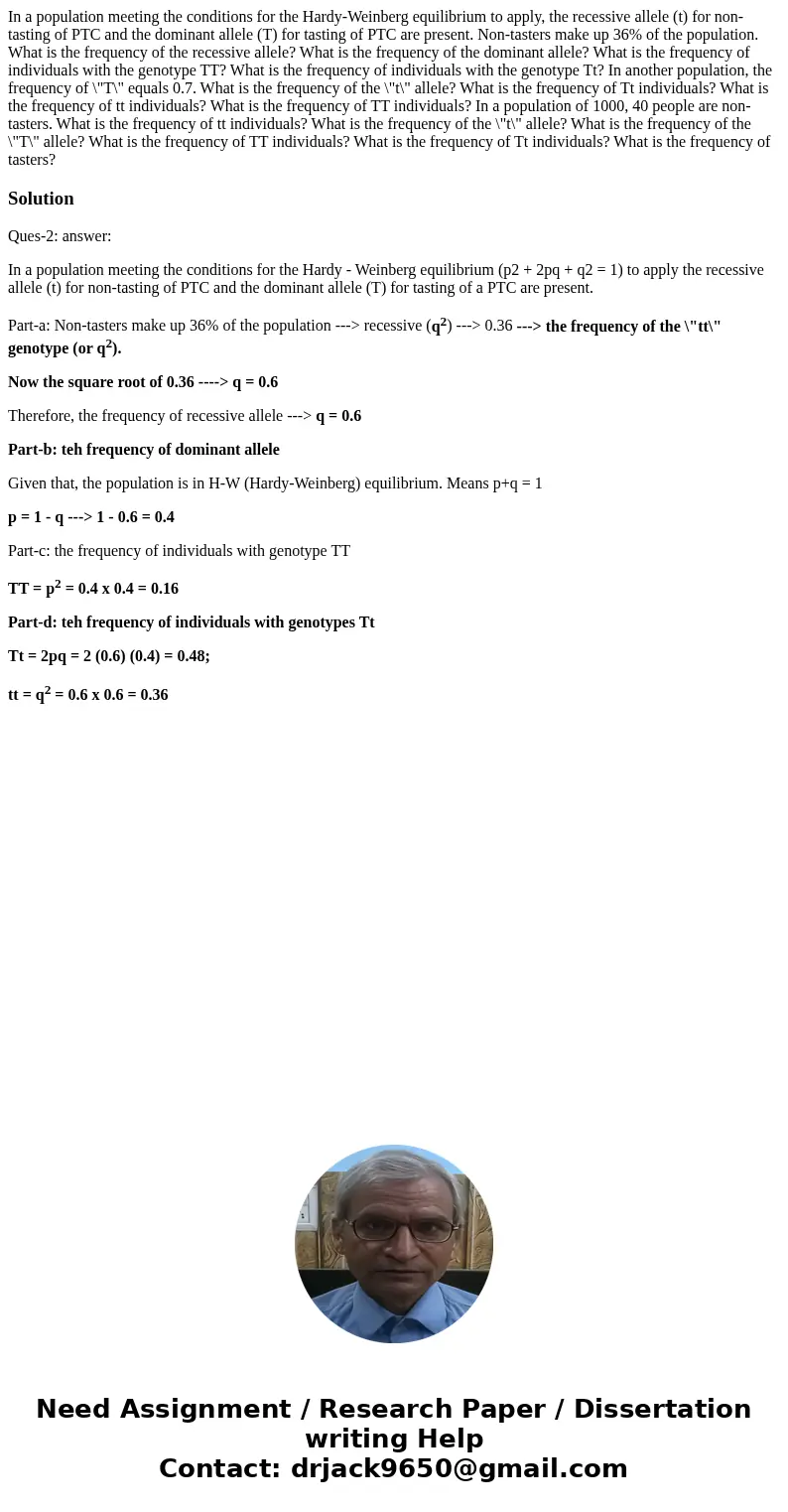In a population meeting the conditions for the Hardy-Weinberg equilibrium to apply, the recessive allele (t) for non-tasting of PTC and the dominant allele (T) for tasting of PTC are present. Non-tasters make up 36% of the population. What is the frequency of the recessive allele? What is the frequency of the dominant allele? What is the frequency of individuals with the genotype TT? What is the frequency of individuals with the genotype Tt? In another population, the frequency of \"T\" equals 0.7. What is the frequency of the \"t\" allele? What is the frequency of Tt individuals? What is the frequency of tt individuals? What is the frequency of TT individuals? In a population of 1000, 40 people are non-tasters. What is the frequency of tt individuals? What is the frequency of the \"t\" allele? What is the frequency of the \"T\" allele? What is the frequency of TT individuals? What is the frequency of Tt individuals? What is the frequency of tasters?
Ques-2: answer:
In a population meeting the conditions for the Hardy - Weinberg equilibrium (p2 + 2pq + q2 = 1) to apply the recessive allele (t) for non-tasting of PTC and the dominant allele (T) for tasting of a PTC are present.
Part-a: Non-tasters make up 36% of the population ---> recessive (q2) ---> 0.36 ---> the frequency of the \"tt\" genotype (or q2).
Now the square root of 0.36 ----> q = 0.6
Therefore, the frequency of recessive allele ---> q = 0.6
Part-b: teh frequency of dominant allele
Given that, the population is in H-W (Hardy-Weinberg) equilibrium. Means p+q = 1
p = 1 - q ---> 1 - 0.6 = 0.4
Part-c: the frequency of individuals with genotype TT
TT = p2 = 0.4 x 0.4 = 0.16
Part-d: teh frequency of individuals with genotypes Tt
Tt = 2pq = 2 (0.6) (0.4) = 0.48;
tt = q2 = 0.6 x 0.6 = 0.36

 Homework Sourse
Homework Sourse